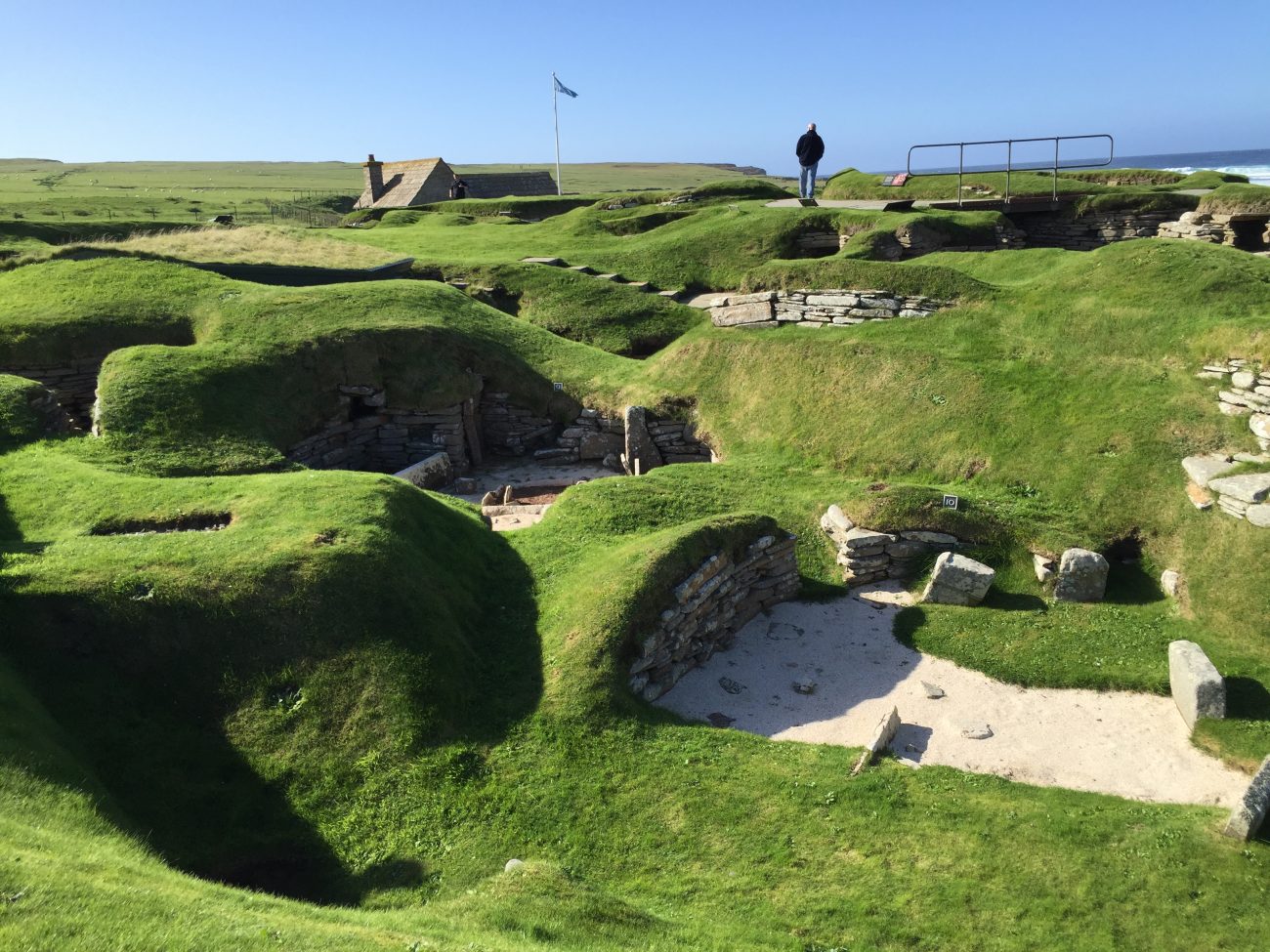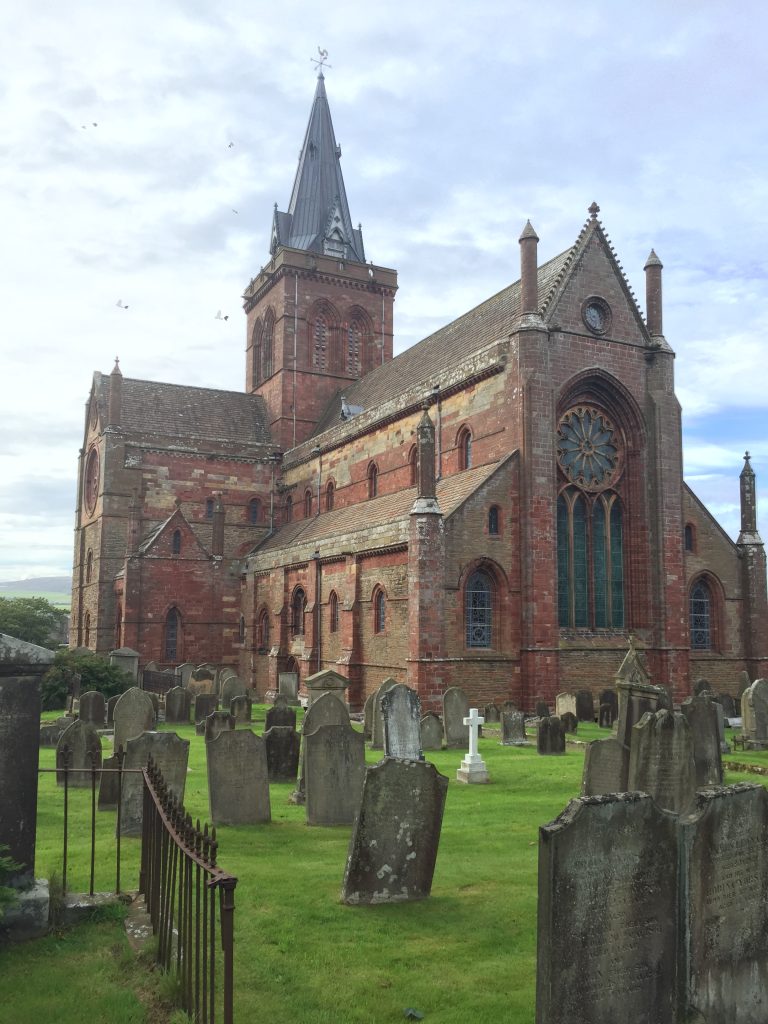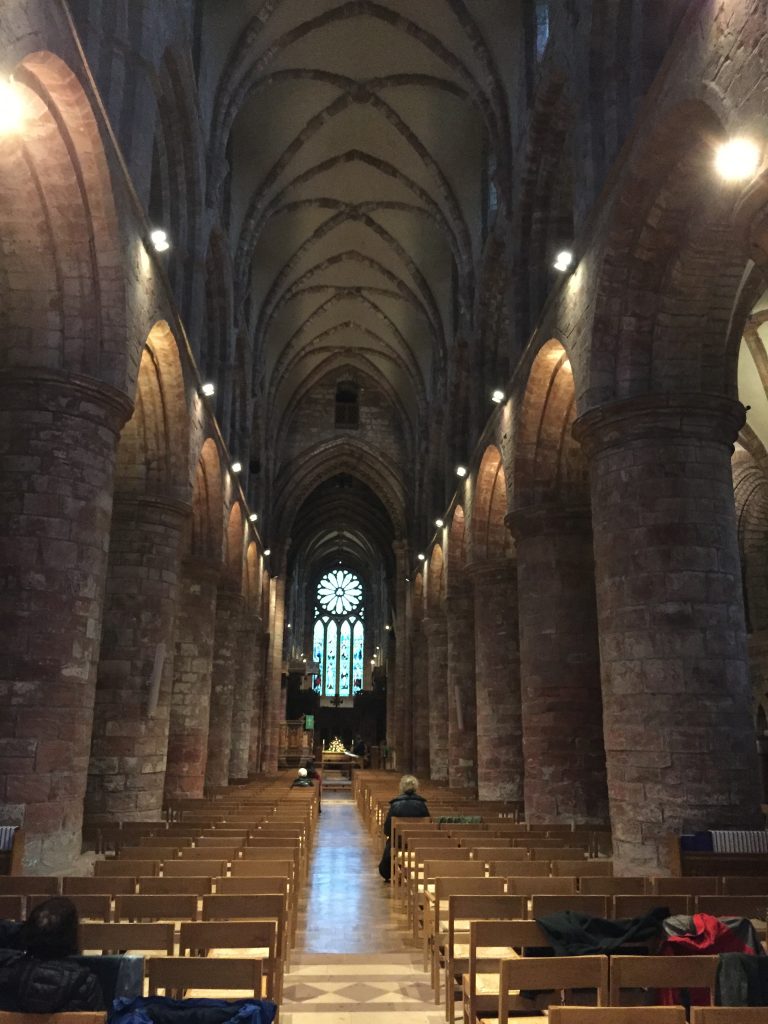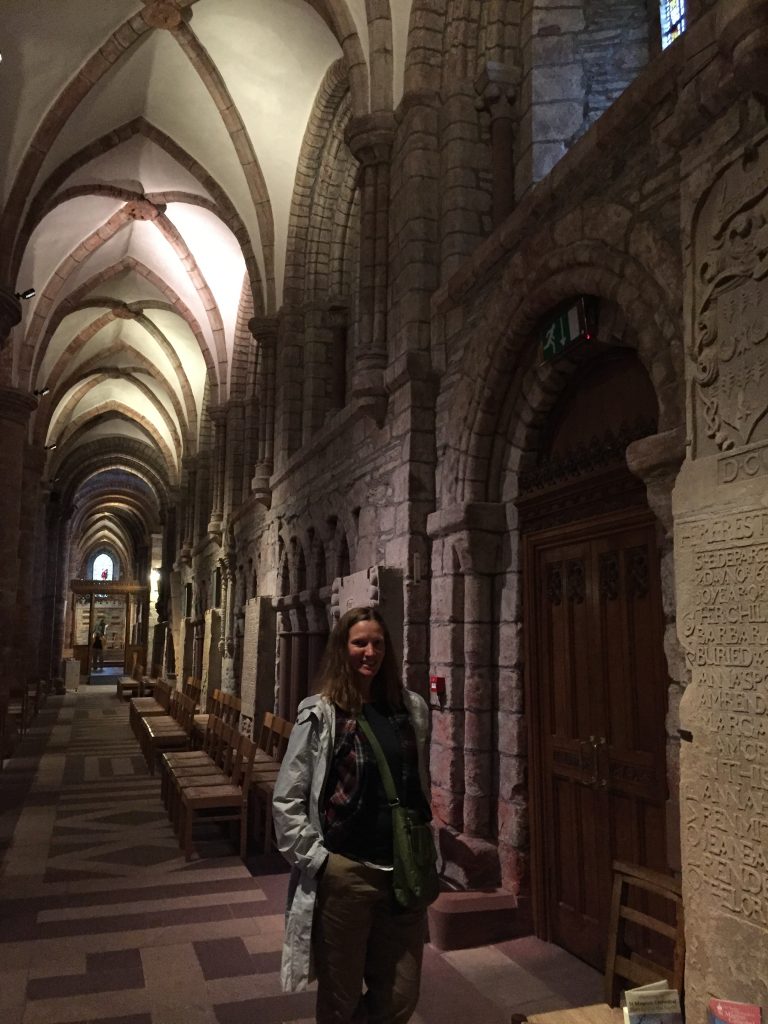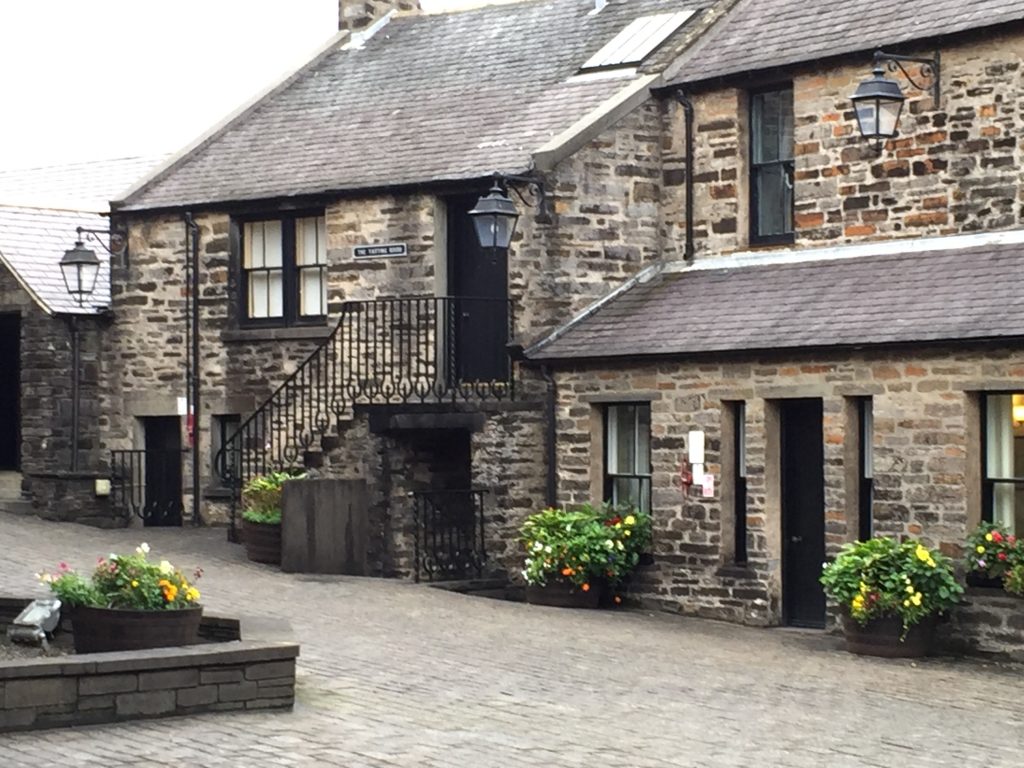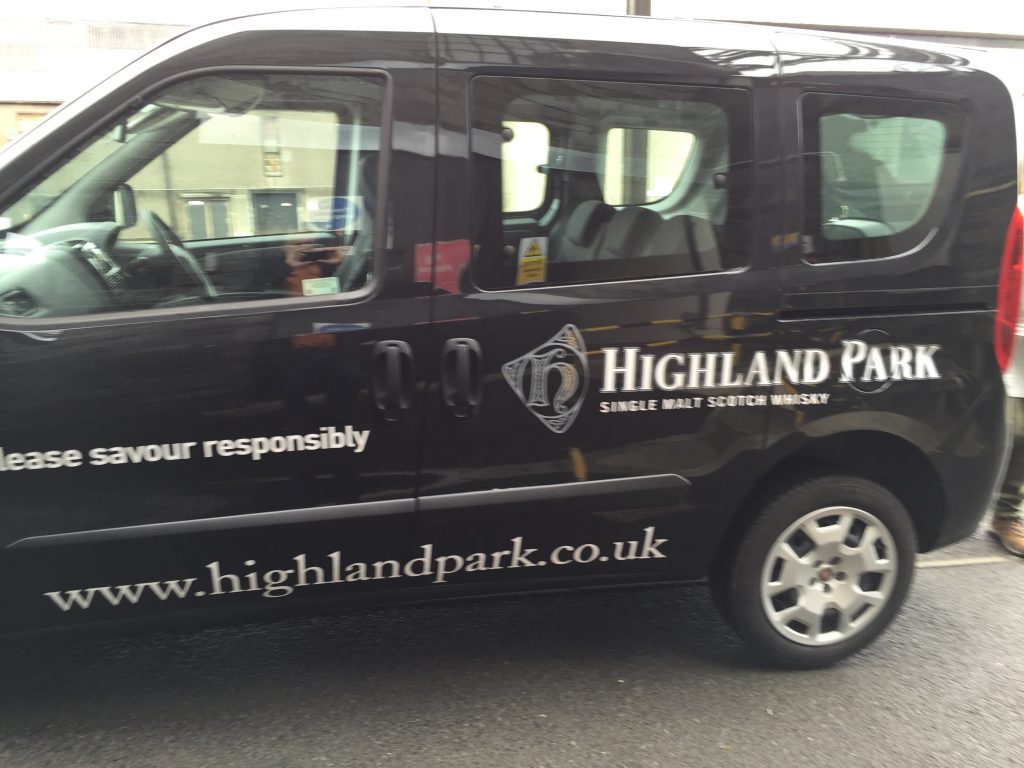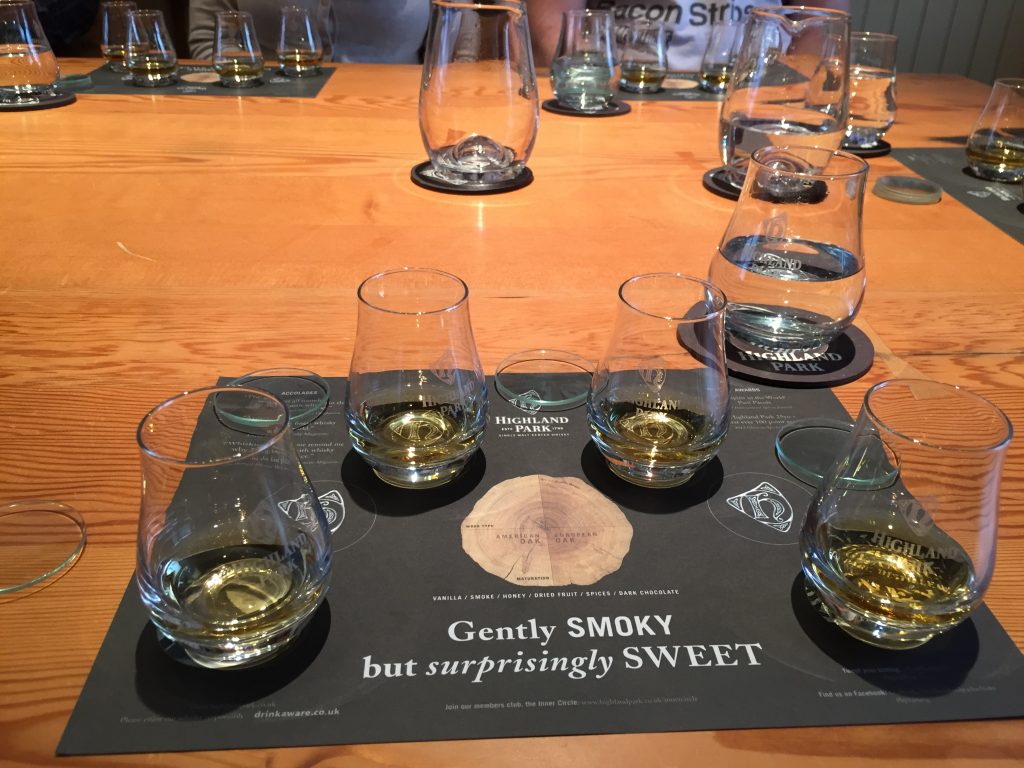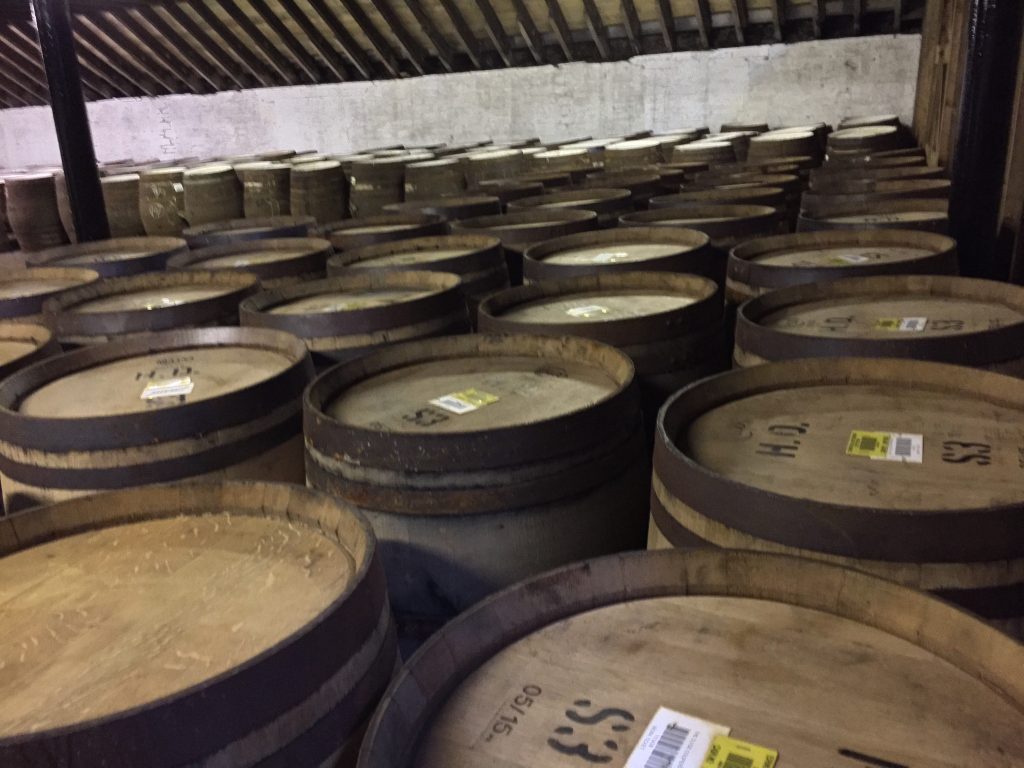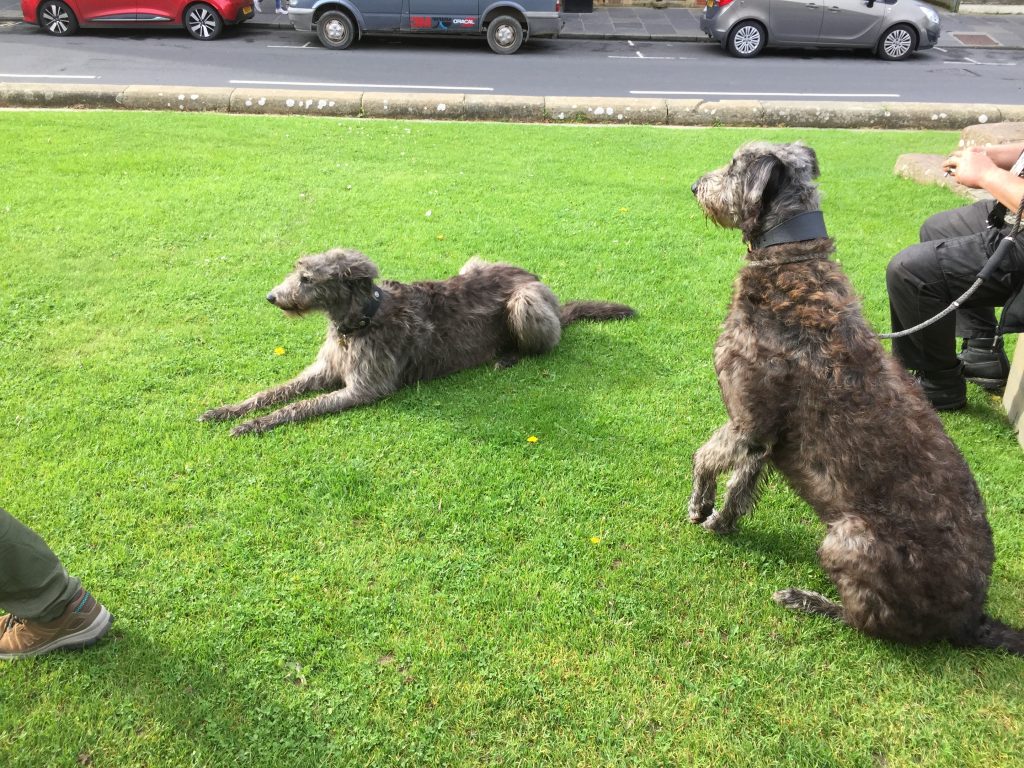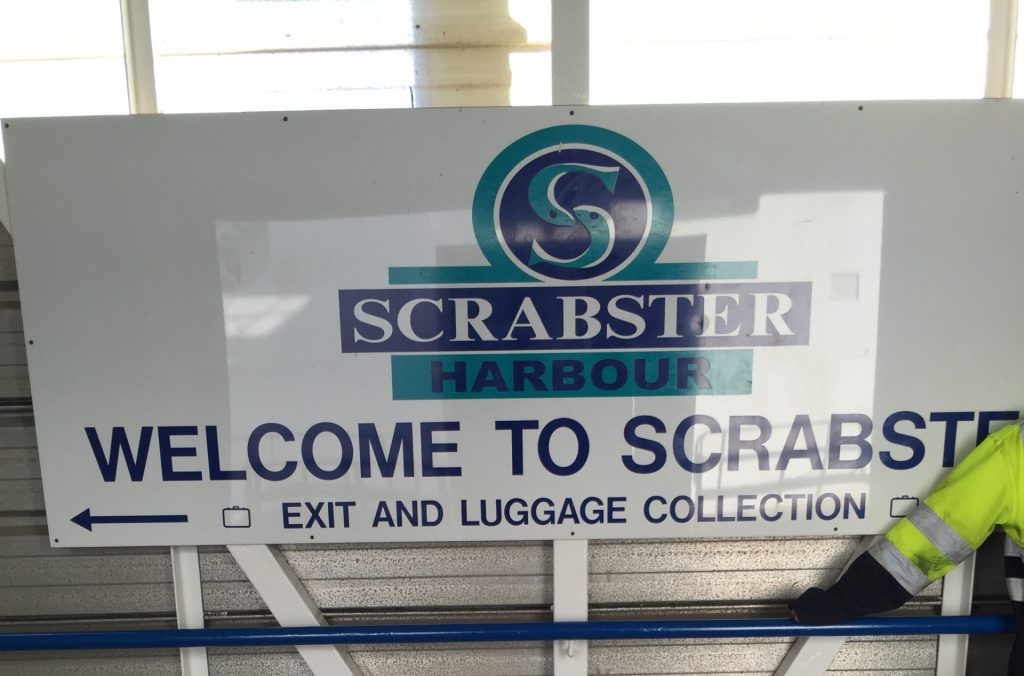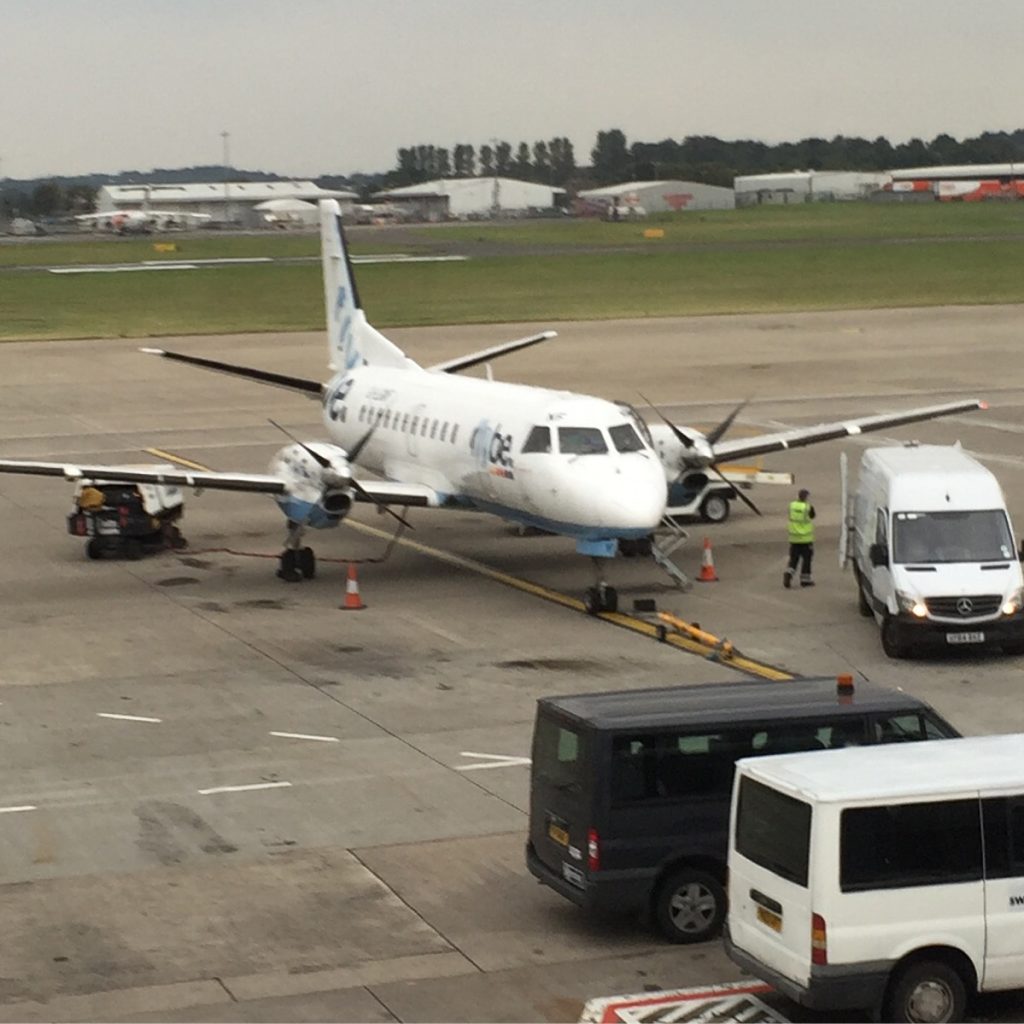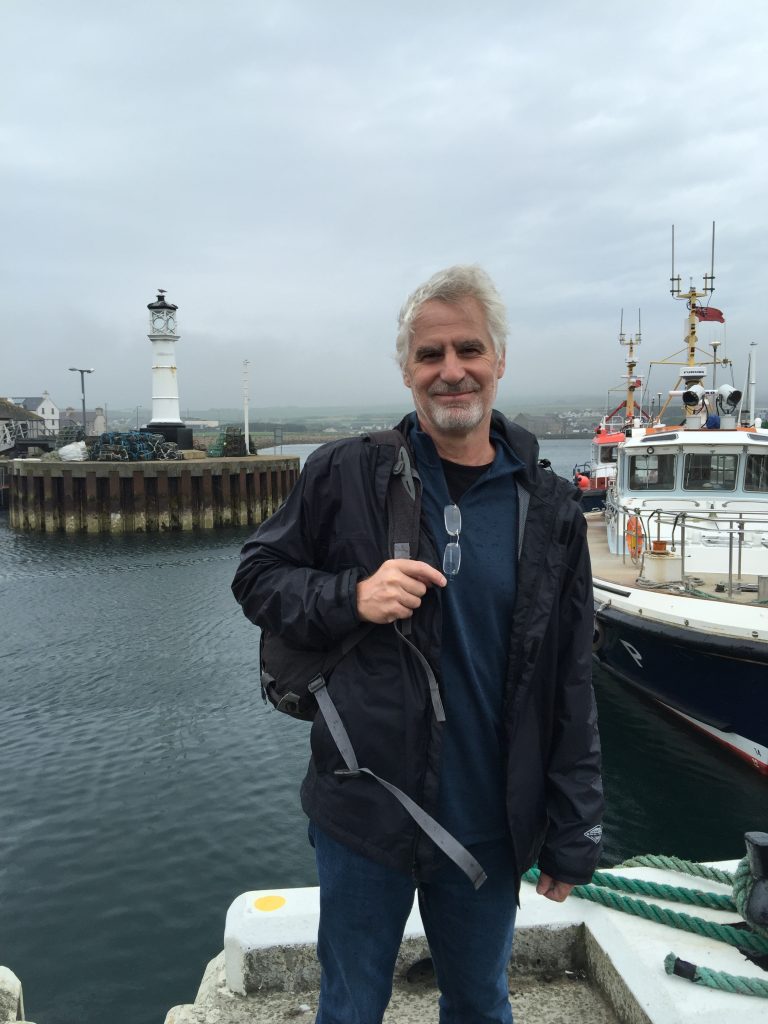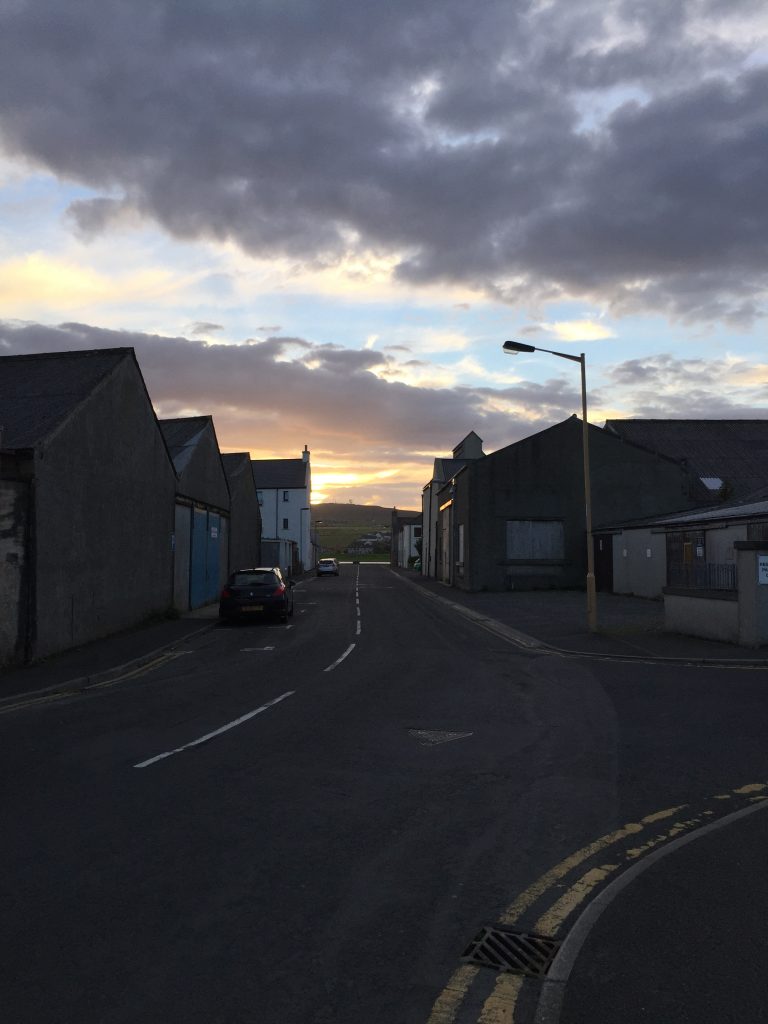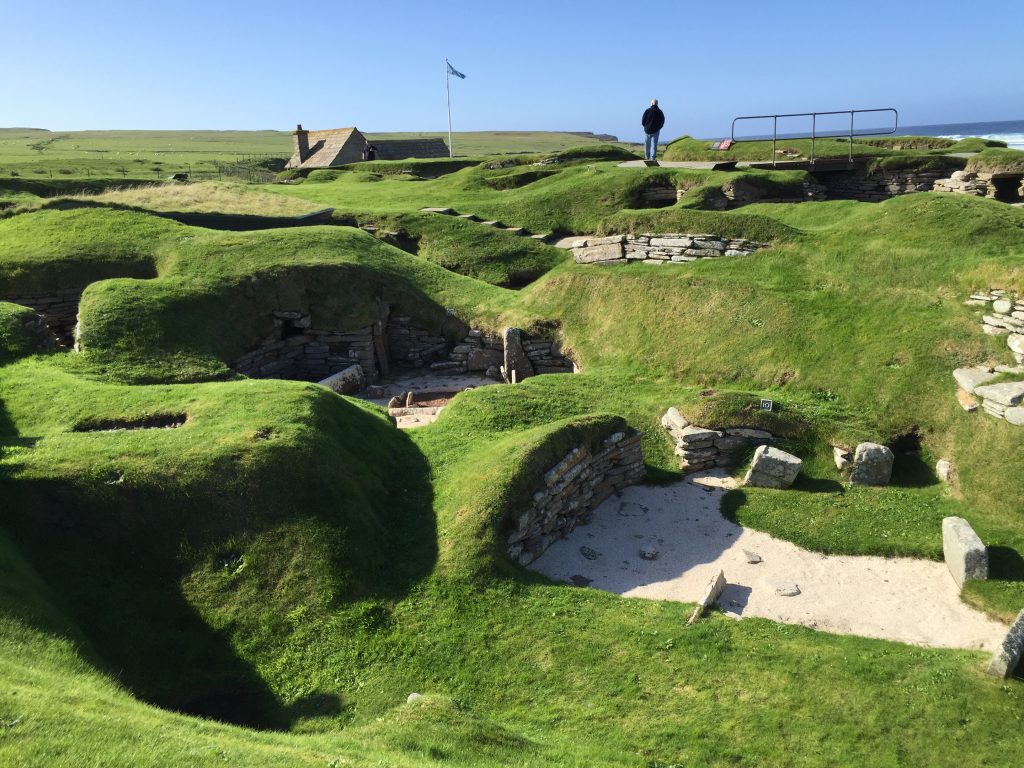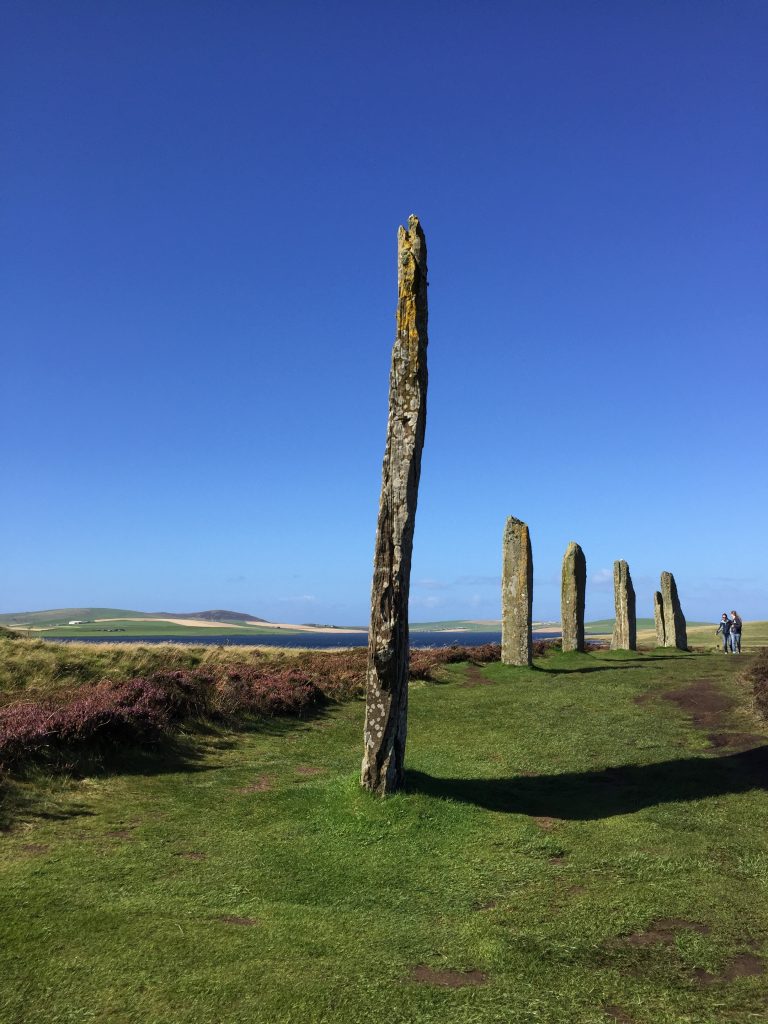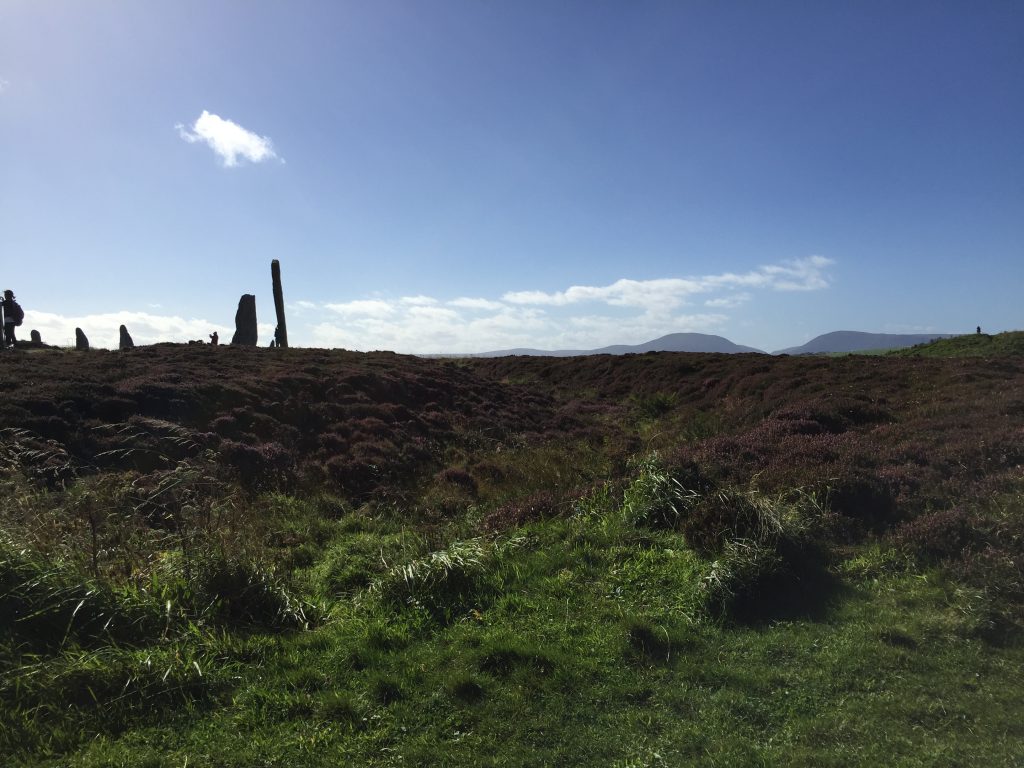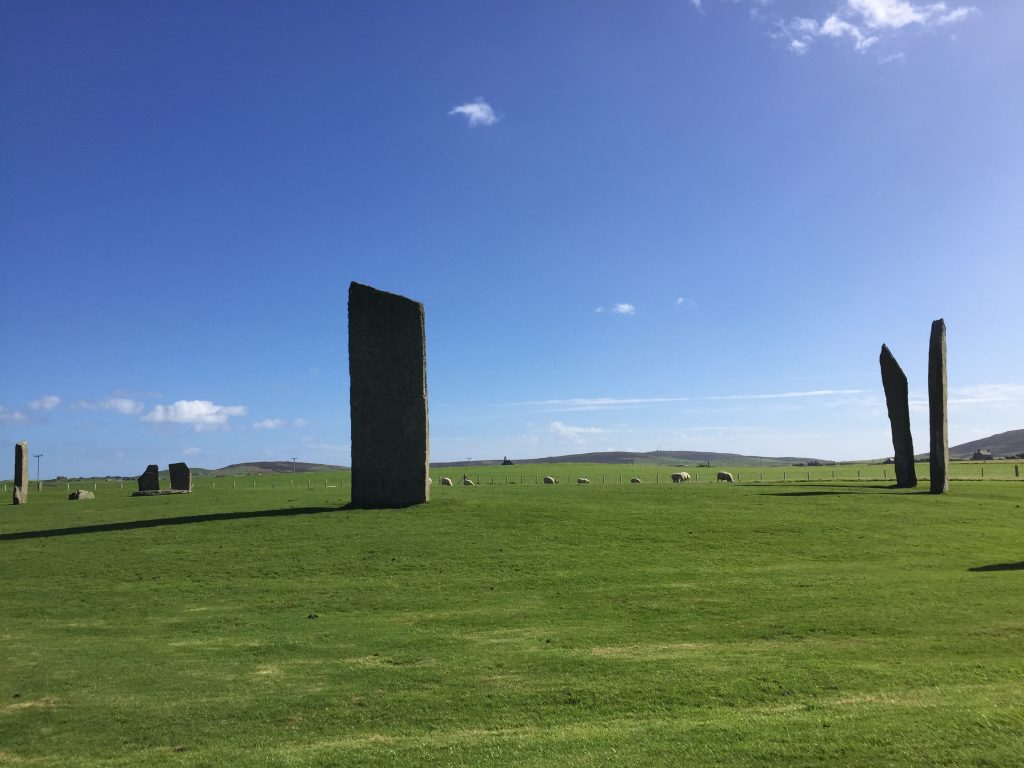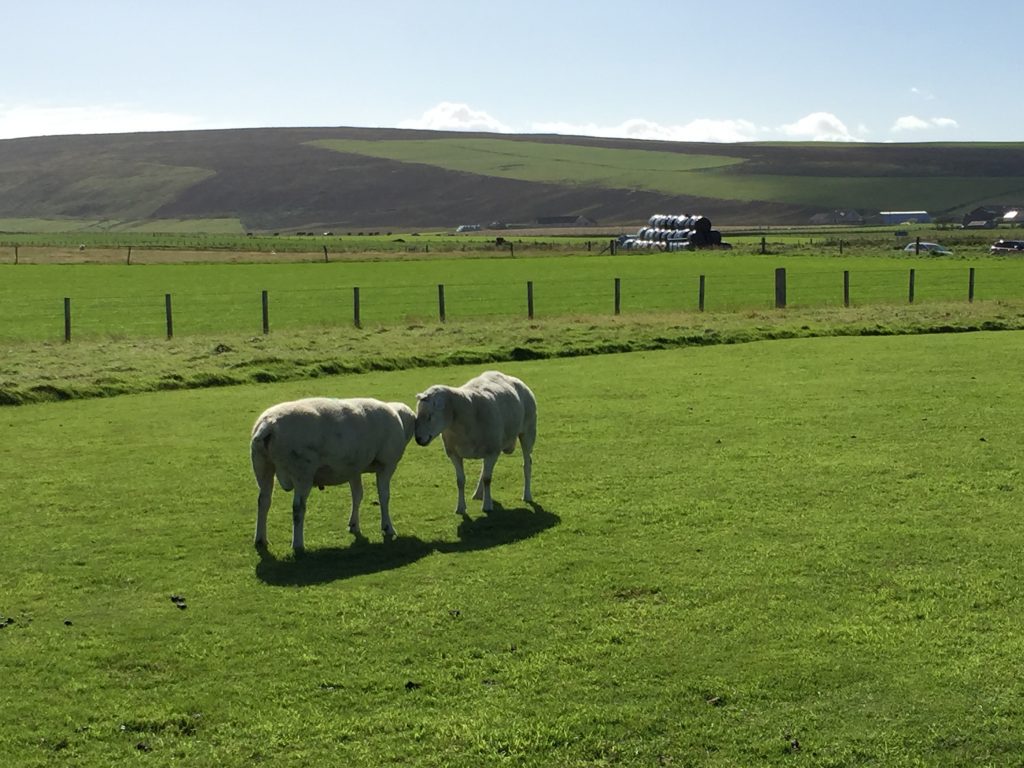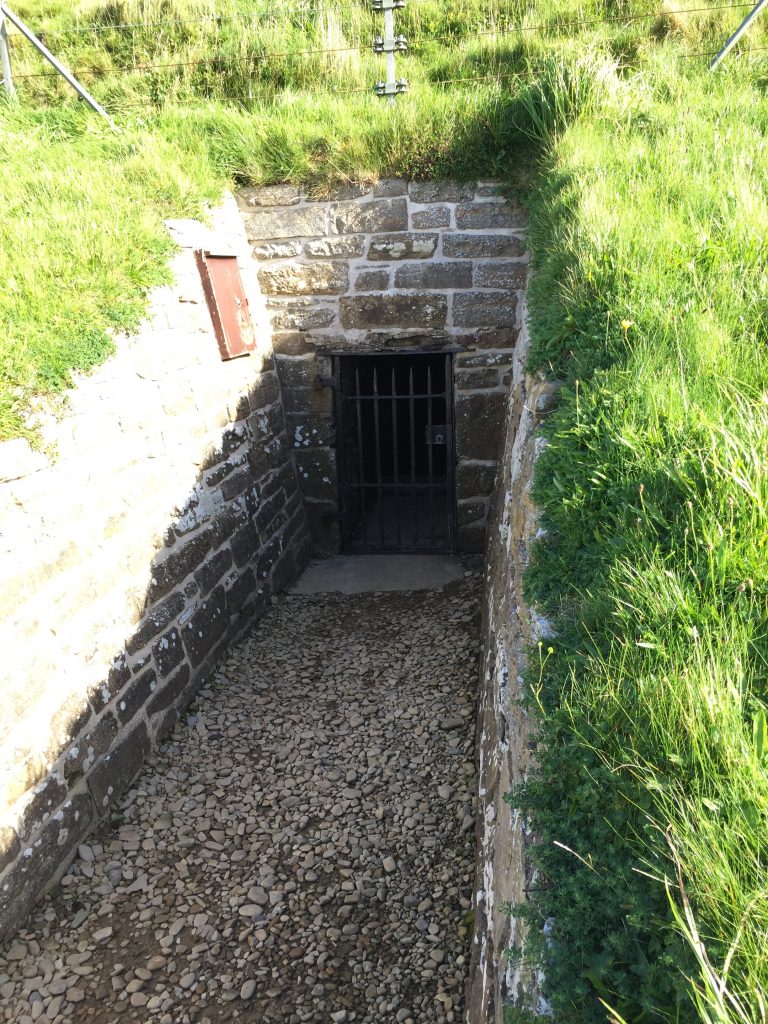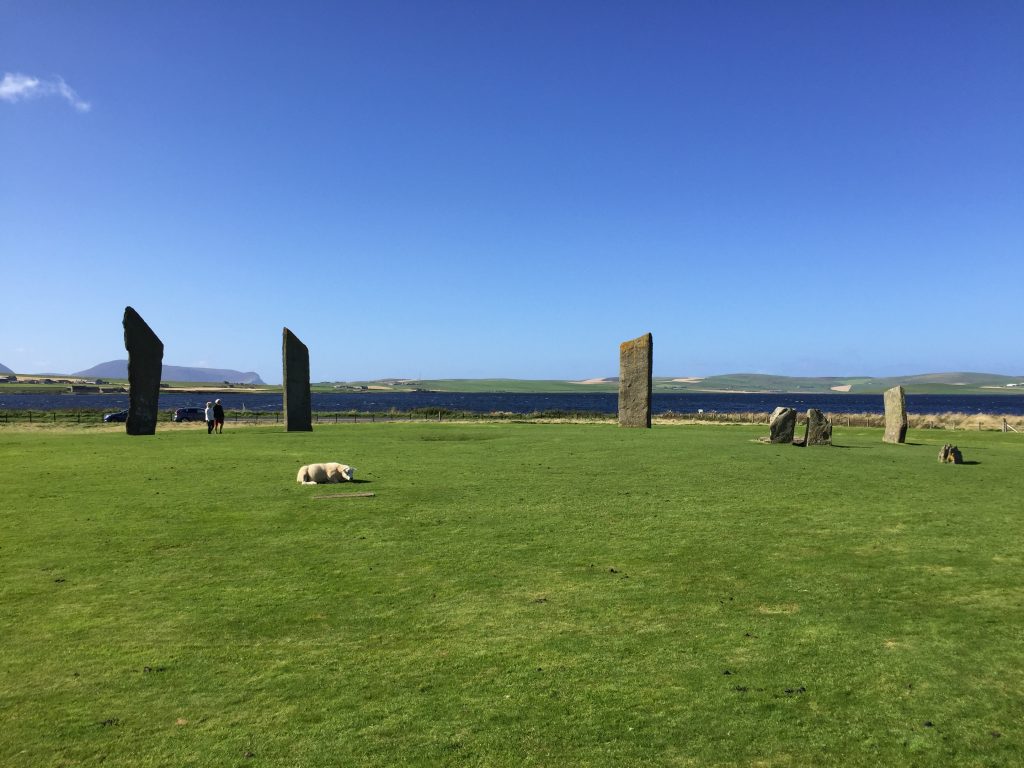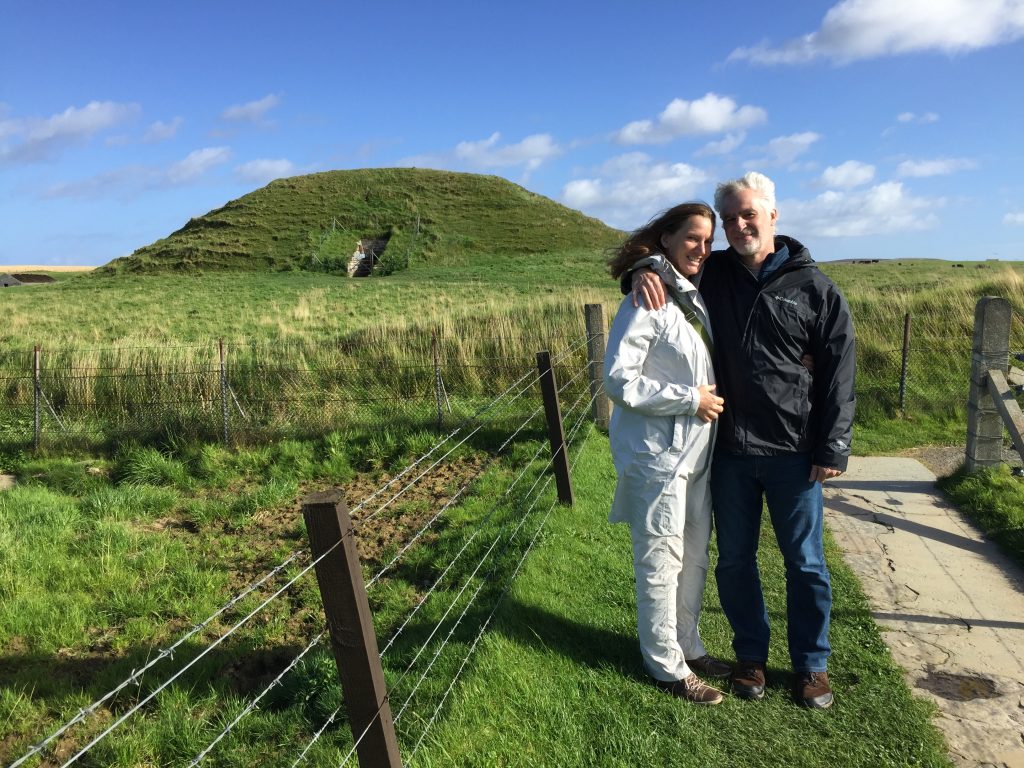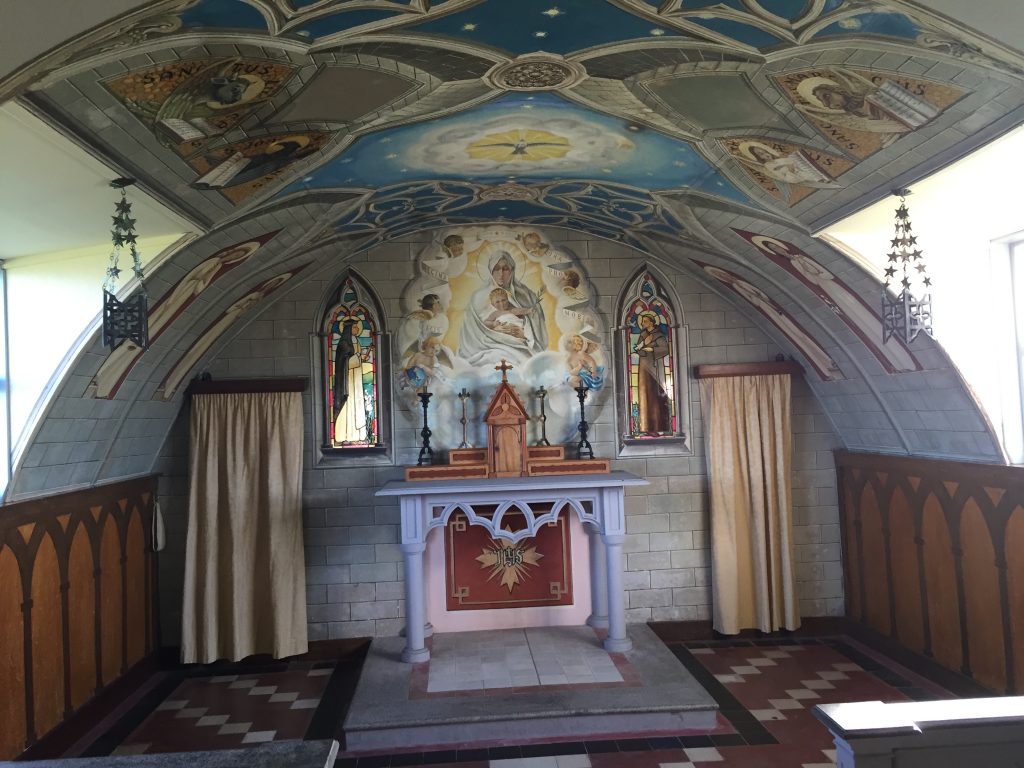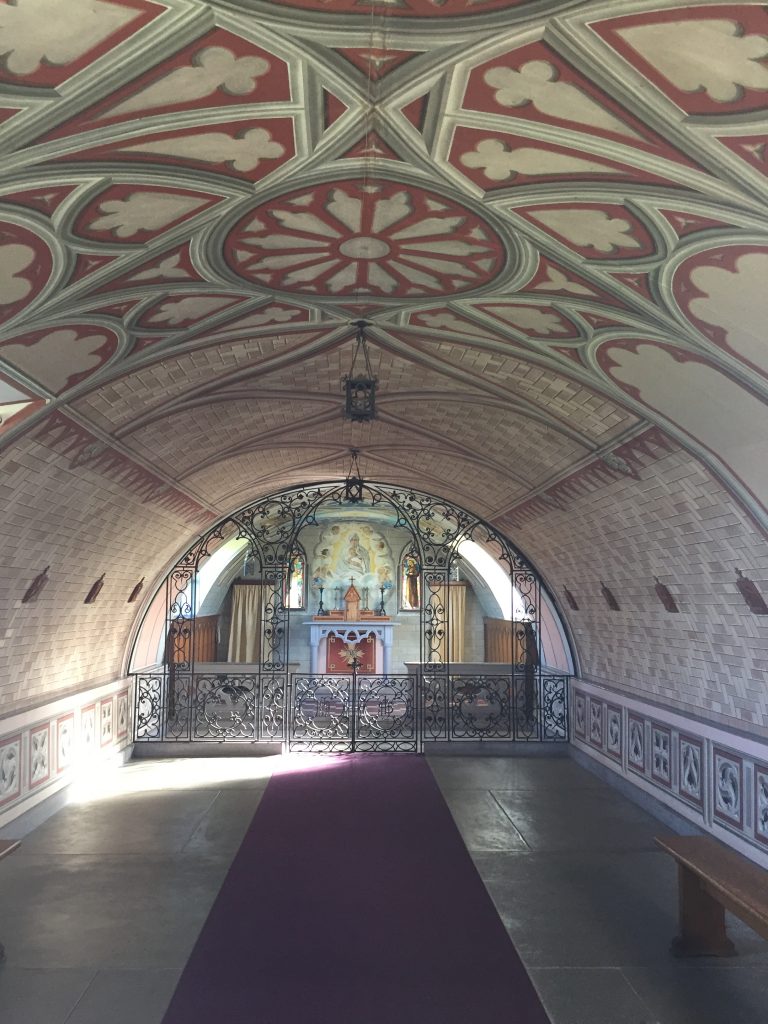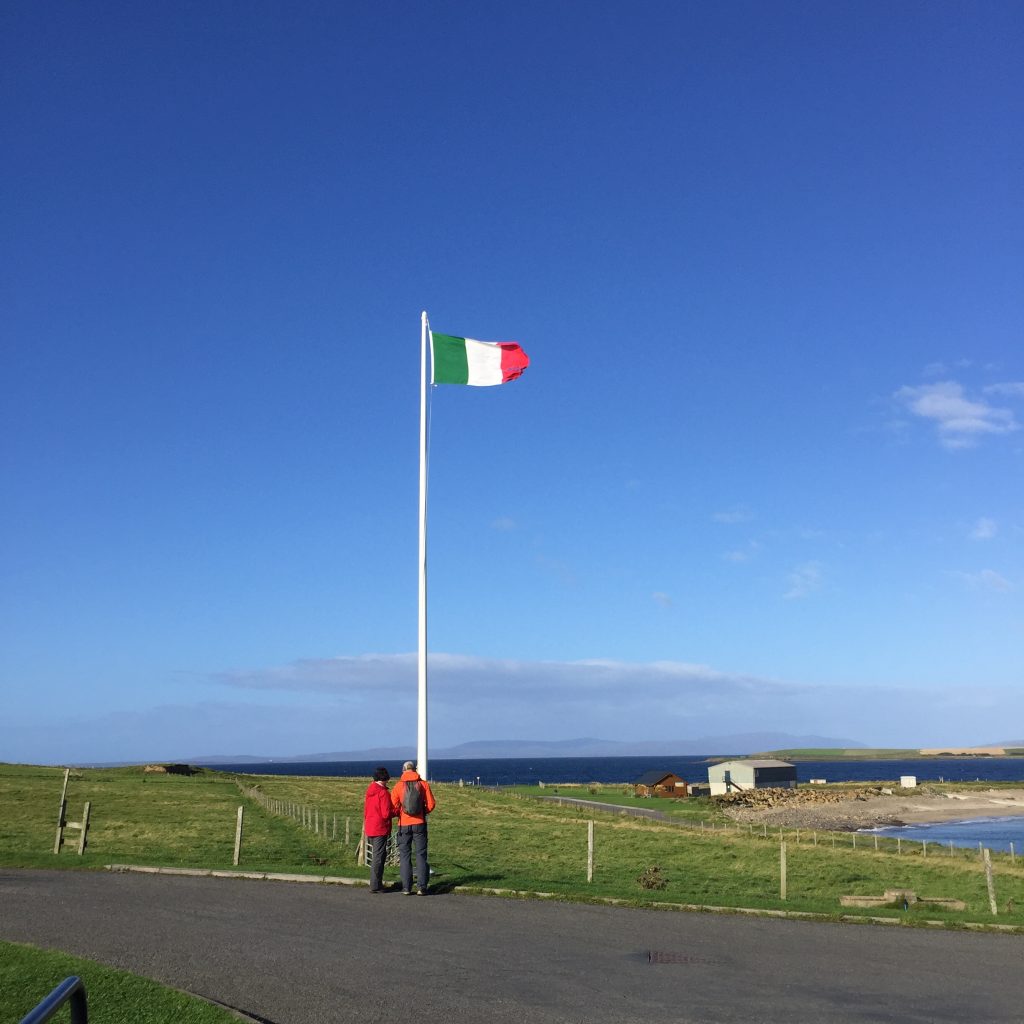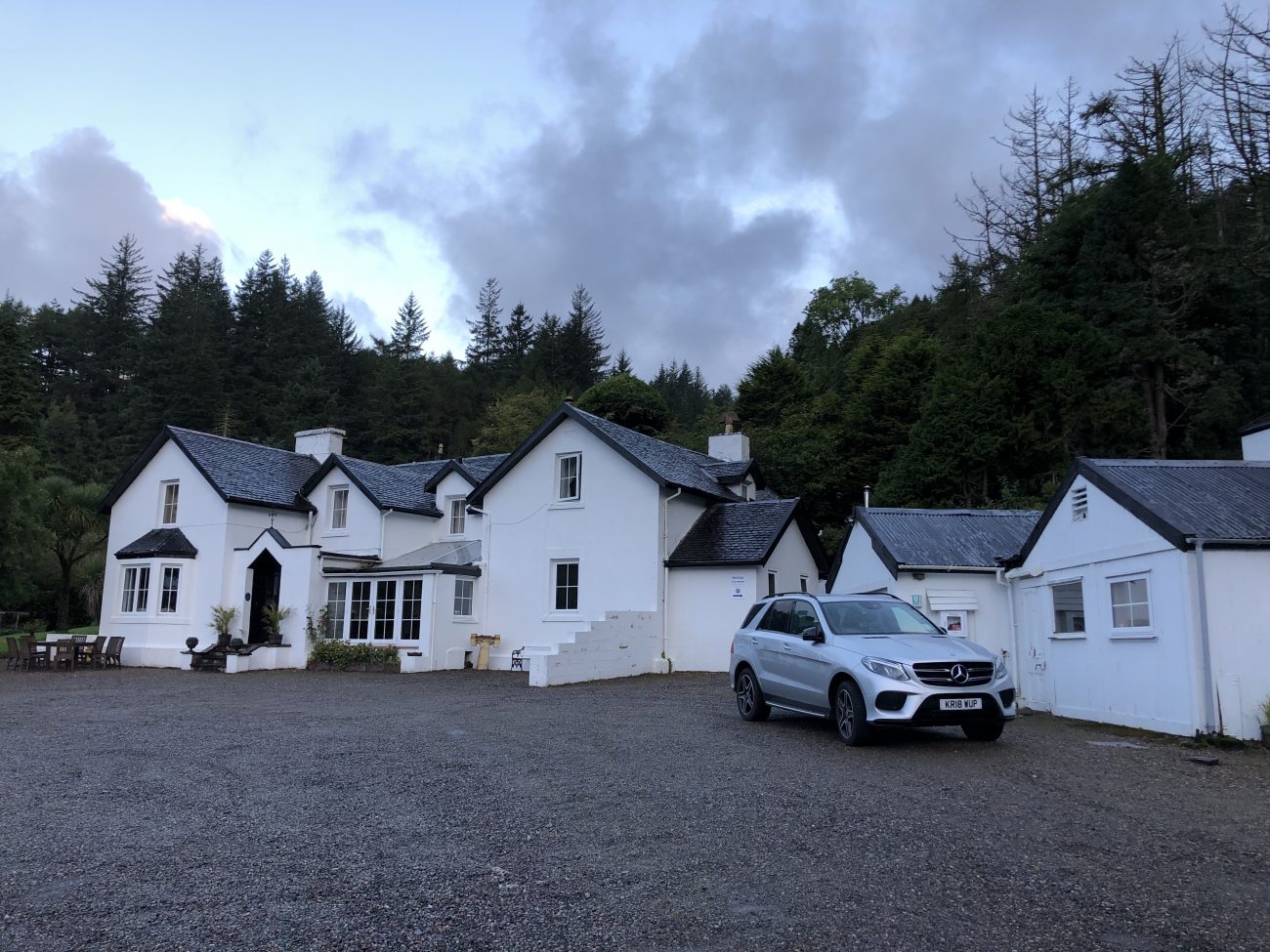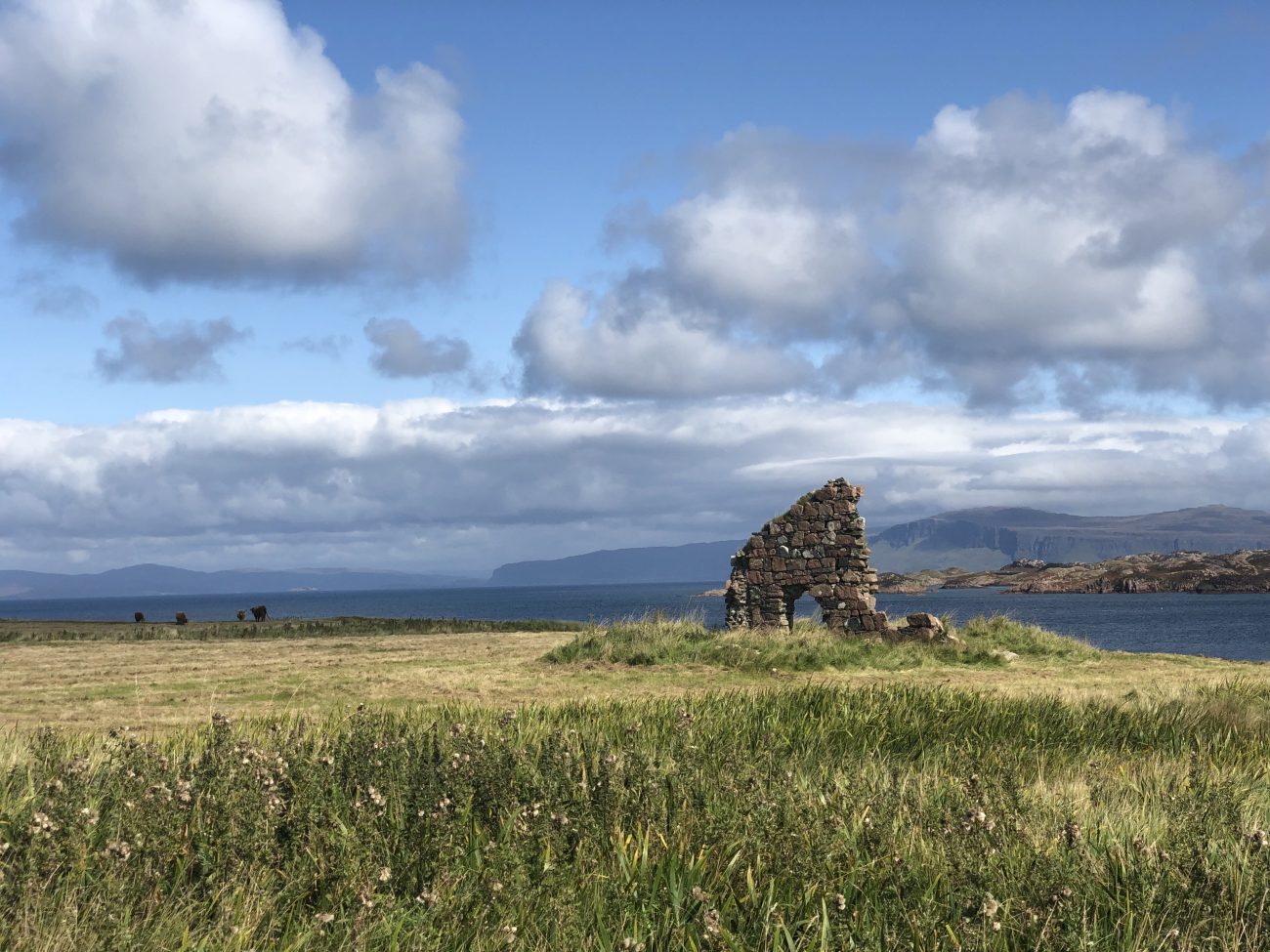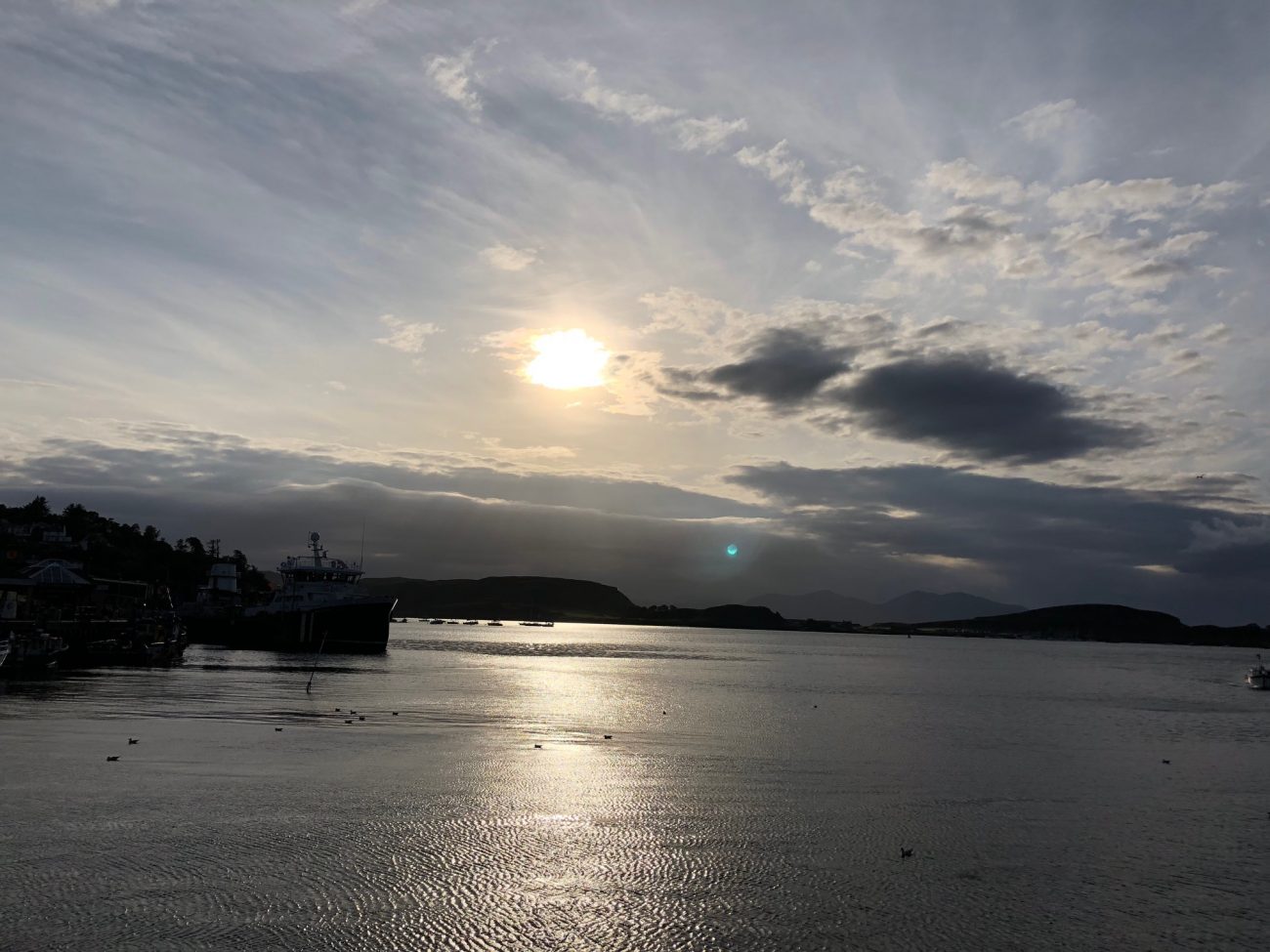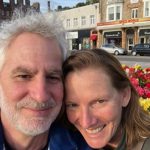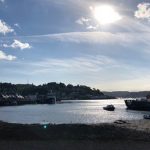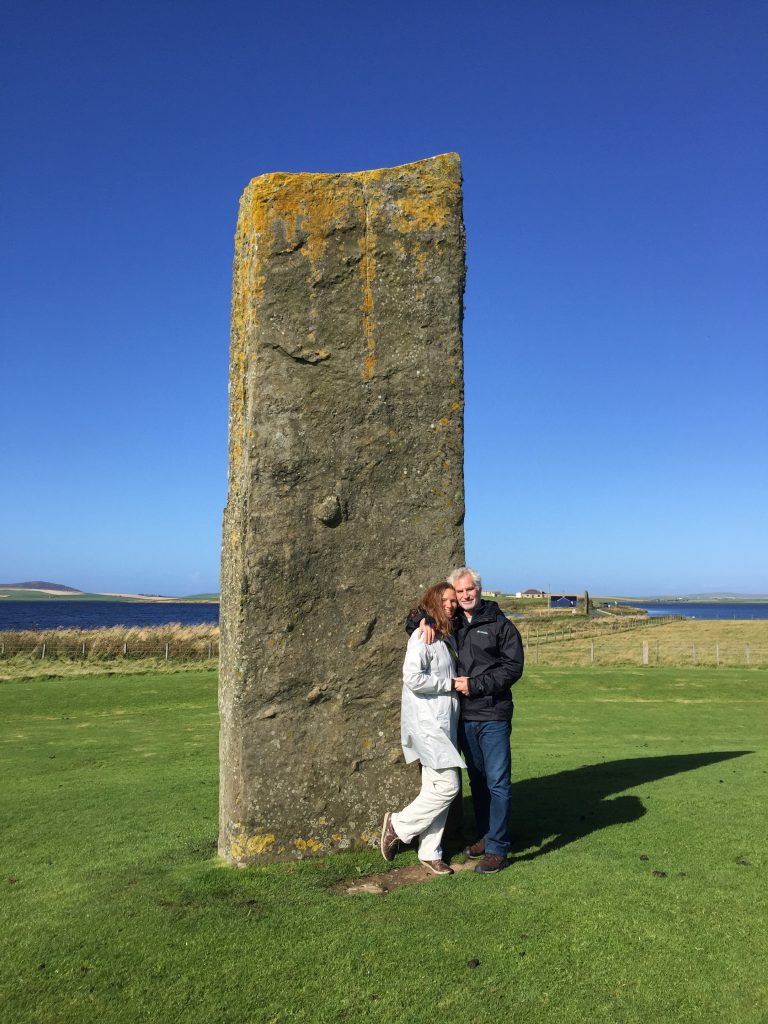
Located north of the Scotland mainland where the North Sea meets the Atlantic Ocean, Orkney is an archipelago of 70 islands, of which only 20 are inhabited. A visit there may not be on everyone’s itinerary when visiting Scotland, but if you’re looking for something a little more remote, rugged and full of Neolithic treasures, it may be the place for you.
What you won’t find are trees. They can’t survive the winter winds, and it’s this treeless backdrop, along with its Nordic influence, that gives the Orkneys their unique character. Located closer to Norway than London, the Orkneys were once ruled by the Viking kings of Norway and Denmark.
For a two-day, three-night trip, we limited our visit to the Orkney mainland and stayed three nights at the Albert Hotel in Kirkwall.
Kirkwall
Kirkwall is worth at least a full day itself, starting with St. Magnus Cathedral, where the bones of St. Magnus (the Earl of Orkney) lie within the walls of the choir. It was founded in 1137 in honor of Magnus and as a place of pilgrimage. Why? The story goes that Magnus shared the Earldom with his cousin Hakon. To settle a dispute, Magnus proposed a peaceful meeting. Hakon agreed but when he arrived he brought eight ships of armed men. Magnus refused to fight and as he prayed, one of Hakon’s men killed him with an axe blow to the head.
We had plenty of time after our flight got in to explore the cathedral before heading back to the hotel and having dinner at the pub downstairs in the Albert Hotel. You’ll hear the noise of the pub up in your room, but only when the people step outside for a smoke.
Highland Park Distillery
The second day was rainy and it was a perfect time for a tour of the Highland Park Distillery, makers of one of our favorite whiskeys. Founded in 1798 by Magnus Eunson, a direct Viking descendent, the distillery’s pride in its Viking legacy is evident in everything they do.
The peat used in Highland Park is unique. Since trees don’t survive on Orkney, the Highland Park peat has no wood, but it’s rich in heather — densely compacted vegetation over 9,000 years old and four meters deep in places. This gives the whiskey its unique smoky sweetness.
We signed up for the Connoisseur Tour, which now would be closest to the Viking Harmony Tour, and they sent a car to pick us up at our hotel. The tour took us through the distilling process and back to a private room where we tasted the 12, 18 and 21 year olds, as well as a Lief Erikson. Keep in mind the 18 and 21-year-old have both been named whiskey of the year in recent years. We walked away with a bottle of the 18, which we sipped for the rest of our trip.
Back in Kirkwall, there are a number of specialty shops carrying Orkney cheese, which is something special, as well as the island’s own oatcakes, meat, fish and beer. After visiting the shops we took advice from a shop owner and went to the Royal Cask Whisky Gin Bar at the Orkney Hotel which has a vast collection of single malts on display for tastings.
Neolithic Orkney
The sun was shining the next day when we hired Jean Ross to take us on a tour of the historic sites on the mainland and we highly recommend her. Born and raised on Orkney, she’s a green badge tour guide—a designation you should look for.
She started us at Maeshowe, one of the finest chambered tombs in Europe with its central chamber lit by the setting midwinter sun. It is some 5,000 years old and looks like a large grass mound from the outside. You enter by crawling on hands and knees to the chamber where a guide outlines the history and carvings on the walls.
On to the Stones of Stenness, also about 5,000 years old, and maybe the oldest henge site on the British Isles. Think Stonehenge, but older and without the crowds or barriers. We were just two of a handful of people, along with a few sheep, who wandered among the ancient stones.
Our plan was to head right from the summit and take the challenging Jordan Cliffs Trail back to the trailhead, making it a six-mile hike. It was closed, so we opted for a confusing, sometimes steep and often beautiful series of trails, making it nearly eight miles. We started by heading down the way we came and turned right on the Maple Spring Trail for a mile or so, then backtracked northeast for a short while on the Hadlock Brook Trail, and connected to the Amphitheater Trail.
Finally there was Skara Brae. Located on the southern shore of the Bay o’ Skail, it is one of Europe’s most complete Neolithic village. Occupied from roughly 3180 BC to 2500 BC, its houses and stone furniture provide an insight into the daily lives of Neolithic people. A UNESCOWorld Heritage Site, it is older than Stonehenge and the Great Pyramids, and has been called the “Scottish Pompeii because of its excellent preservation.
Orkney’s Italian Chapel
A more contemporary but fascinating site is Orkney’s Italian Chapel, which was built by a group of Italian prisoners of war sent to Orkney during World War II to work on the Churchill Barriers, a massive series of concrete causeways that seal the eastern approaches to Scapa Flow, the United Kingdom’s chief naval base during the First and Second World Wars.
Led by the artist Domenico Chiocchetti, the Italians built the chapel, which was later restored, and after the war Chiocchetti returned to restore the paint work of the chapel interior.
The Orkney Brewery
Along the way, Jean arranged for us to stop for lunch at the Orkney Brewery where we enjoyed the meal and a flight of the local beer. We were partial to the Dark Island and Red Macgregor.
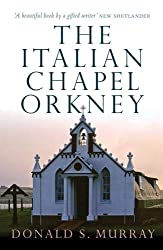
The Isle of Mull is often just used as a stepping stone from Scottish mainland to the Isle of Iona, but the island, one of the Inner Hebrides off the west coast of Scotland, has unique wildlife and dramatic landscapes well worth a visit of its own.
After a train from Glasgow or Edinburgh, you arrive on the 40-minute ferry from Oban to Craignure on Mull’s east coast, where most people either board a bus heading west to Fionnphort and the Iona ferry, about a 75-minute ride on a single track road, or north along the east coast to Tobermory, the largest town (see more below). The buses and ferries are well synchronized.
We had rented a cottage for a month on Iona and planned a four-day stay at the Tiroran House Hotel, located in the Tiroran Forest on the Ardmeanach peninsula, which has a volcanic landscape and 200-million-year-old fossils at its western end. To get there, we had to take bus all the way across Mull, from Fionnphort to Craignure to rent a car and then drive back to the west for about 30 minutes. But once we reached the hotel with our gracious hosts Laurence and Katie MacKay, which is tucked down a long drive, far away on this sparsely populated island, we soon learned it was a wise choice.
The first day we headed into the forest to look for white tailed sea eagles, Europe’s largest bird of prey. One of 30 pairs on the island have a nest near the hotel, but the two chicks had died over the summer so there was little activity around the nest, and we were not lucky enough to see any. But after walking several miles in the forest and around the loch, we returned to the hotel to enjoy a glass of the hotel’s branded White Tail Gin. Guests gathered for a glass (powerful but smooth, like the bird) before a wonderful dinner in the hotel dining room.
On Day Two we drove to the northern part of peninsula where we headed east along Loch Scridain, with some breathtaking scenery on the narrow single-track road, and then turned north at Salen to Tobermory.
Tobermory is a picturesque little port town, Mull’s largest, with everything you want: a distillery where we bought an 18-year-old Ledaig (pronounced Lay-chek) finished in a sherry cask, great shops and restaurants. We started with chocolate, then oysters for lunch and finished with ice cream, and as a bonus found the Tackle and Books shop, where I purchased a book by Scottish writer Robin Jenkins, most famous for his 1955 novel, The Cone Gatherers. It was back to a casual dinner at the White Tail coffee shop with the MacKays and some new friends from London.
The weather was spotty the entire trip but Day Three was the rainiest so we headed west to Bunessan to visit Ardalanish Weavers, where you can see the Hebridean sheep, whose black and brown wool they weave, grazing on the hillocks around the building. From the main (single track) road, it’s a drive up a hill on a road that seems impossibly narrow. The weavers were at work on looms from the 1920s and 1950s, and we fed the shop, leaving with fabric and a wrap, drove back to our hotel, which had filled up, making dinner even more lively.

The next morning, we left early, driving slowly and taking in the peaceful morning, which is easy to do on Mull. We were the only ones on the narrow road, except for some Highland Cattle who did not want to move and held us up long enough that we barely made the bus back to Fionnphort. Dropping off the rental car involved leaving the keys on the seat, the door unlocked and car in a parking lot.
It’s said if you visit Iona once, you should do it three times. This was our fourth trip. The first was part of a tour of Scotland and we stayed for two nights in the Argyle Inn. The second, we couldn’t find a place to stay and booked three nights across the sound in a bed & breakfast in Fionnphort on the Isle Mull. That was the year we stumbled on a cottage to rent, which we booked for four weeks last year and four weeks again this year.
People have asked us how we could stay on such a tiny, remote island with so little to do. It’s only about three miles from north to south and a mile from east to west, with less than 200 residents. The small ferry that crosses the Iona Sound from Mull is the only entry point, and it brings tourists who want to see the Iona Abbey. But there’s so much more. Soon after many people set foot on the island, they feel something unusual. Peace, stillness, whatever you want to call it. Maybe what we write about this year’s trip will help explain.
Our cottage is right on the Iona sound and our stay began with so many days of sun we almost forgot we were in Scotland. On an island only a mile or so from east to west, we can wake up to the sunrise our our window, and later make a quick 15-minute to the west coast for the sunset. We planned our days around the weather, planning hikes when the sun was out and staying in to write, paint, knit, read or whatever else we wanted.
On the first day we headed north on the main “road” to the sandy beaches, multi-colored rocks and turquoise water, with views out to the islands of Staffa, the Dutchman’s Cap, and of course, Mull. Along the way, you walk through the village, where we like to stop at the Iona Craft Shop for an espresso and, on the first day, Debbie bought out all the Ioan wool in xx green. On the way back, the Low Door, a tiny specialty shop (I banged my head a few times), owned by the St. Columba Hotel, is a good stop for supplies.
The next day, it was on to St. Columba’s Bay on the southern tip of the island, where Columba landed in the year 563 and established the monastery that made the island famous. That trek means heading west to the golf course, which has more cow patties than golfers, and climbing south through the heather cover to the bay, where you find Iona rocks with serpentine, along with a labyrinth. Sheep will wander to the coastline to eat seaweed. It usually takes us about 3 to 4 hours, and we like to stop in the xx to visit Val, talk to her about the stones she’s collected and the jewelry she’s making. Maybe we buy some hoggit, the only break from the largely vegetarian diet we maintain when we’re here.
The weather stayed sunny so the next day we headed back to the north, up to the top of Dun I, Iona’s high point (it’s just a big rocky hill). There, you find views of the Atlantic to the west, north to the islands of Staffa, east to the sound and Mull, and south to the Hill of Angels. It’s usually windy, but we pack a lunch and find a sheltered spot to rest.
Friday was a day of rest, enjoying the dramatic skies, wandering through the Iona Abbey, stopping for an espresso or a dram (or both), shopping at the market, and as always, enjoying the peace, quiet and beautiful views.
So it’s not that tough to stay on such a tiny, remote island. There’s plenty of days with rain, maybe even a gale, but there’s always the skies, the rainbows and sense of peace makes it a bit more of a retreat than . a vacation.
The trip from Glasgow to the Isle of Iona is not quick and direct no matter how you do it. This time, we were heading straight to Iona without a car (they don’t allow them on the island anyway). From Queen Street Station, we caught the West Highland line on ScotRail. We’ve done it a few times before, but not always on such as beautiful day. About an hour into the three-hour journey, you begin to see the soft, green hills dotted with sheep and dramatic, steep-sided lochs, everything that makes you think about Scotland.
After two hours, the train splits at Crianlarich – one going north to Mallaig, where you can catch a ferry to the Isle of Skye, one to Fort William (all the back packers) and one to Oban, our destination. You get five minutes to hop off and get something in the tea room, before the two cars begin the last leg to Oban, a good-sized port town with the Oban Distillery, plenty of lodging, restaurants and seafood.
You have to leave early in the morning to make it from Glasgow to Iona in one day, and we did not, so we stayed in Oban. There are some hotels along the waterfront, as well as reasonably priced bed and breakfasts within walking distance of the train station and ferry. We stayed at the Kathemore Guest House, which was a nice B&B, about a 15-minute walk up a hill from the center of town. We picked up some supplies — always a good idea before heading to Mull or Iona (which has no ATM machines) — and had a leisurely dinner along the water.
In the morning, we caught the 11:10 ferry to Craignure on the Isle of Mull, before catching the 1:30 bus west across the island, about 75-minute ride. The buses are synchronized with the ferries, so they usually wait. They had double-decker buses for the first time offering great views. And we had time, so we had time to run across the street to the cafe for a sausage roll (Gary only) and an espresso. The weather changes fast on the islands, so after traveling through mist covered mountains through Glen More, the sky cleared and there were great views of the lochs and rugged landscape.
At Fionnphort, which sits on the western extremity of Mull, we caught the small Iona ferry for a 10-minute ride to Iona. We’ve included a photo from the ferry landing of a rainbow over Iona, from a previous trip. When we arrived on Iona, our hostess Barbara was waiting for us, and had us safely in our cottage by 3:30. Clouds were forming again, but there would be plenty of sunshine ahead of us.

